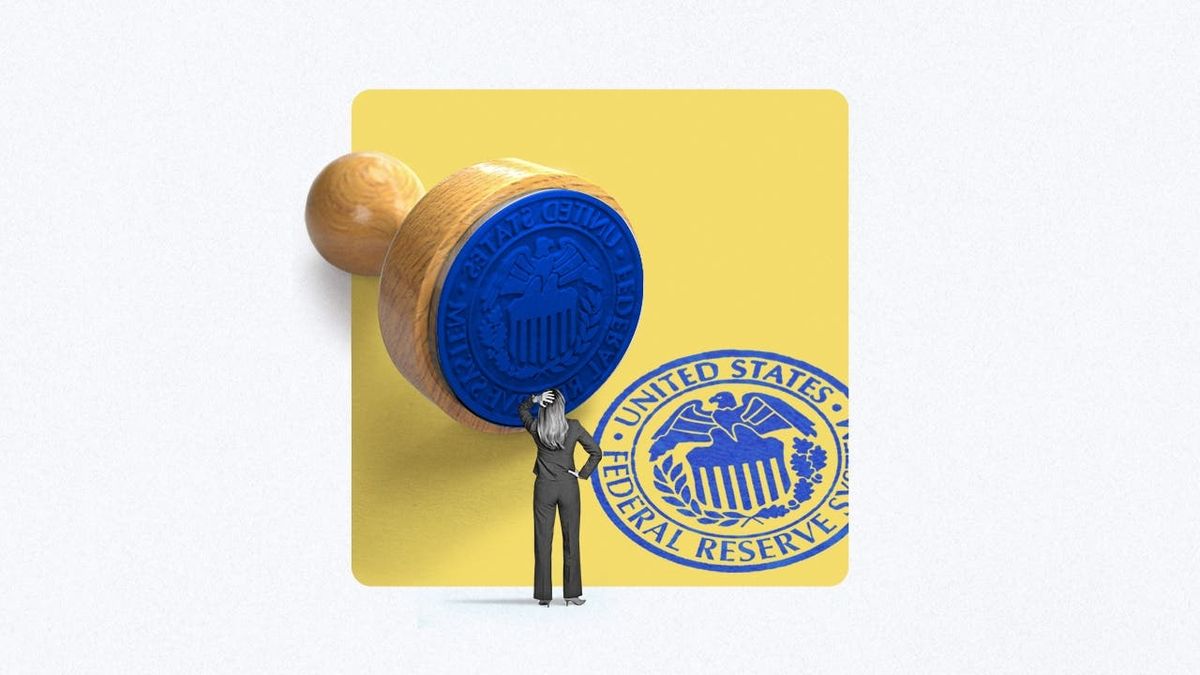


:max_bytes(150000):strip_icc()/Martinbuildingmeeting-eac7275193a6482292daa99bfbd38ea1.jpg)


The United States Federal Reserve (US Fed) concluded its two-day Federal Open Market Committee (FOMC) meeting, where decisions on the country's interest rates are made. The FOMC meets eight times a year to set the benchmark federal funds rate, which directly affects borrowing costs and investment decisions in the American economy. The meetings are closed to the public, and minutes and transcripts are released weeks or years later [05d8907e].
During the FOMC meetings, the committee debates the course of interest rates and crafts a carefully worded statement. While the chairman's preference usually guides the committee's decision, individual members may voice disagreement. The FOMC's main decision is whether to be hawkish or dovish in setting the benchmark rate. The meetings follow a highly structured format, with each participant providing their assessment of the economy. The final decision typically aligns with Alternative B, the default choice. While the policy rate is usually predictable, the statement may be revised [05d8907e].
Former FOMC members James Bullard and Jeffrey Lacker have provided insights into the decision-making process. Dissent among members is rare and polite, with the last dissent occurring in June 2022. The FOMC's decisions have a significant impact on the economy and individuals' finances [05d8907e].
The US Fed's decision to keep interest rates stable for the third consecutive time reflects their cautious approach towards rate cuts. This decision comes amidst ongoing challenges in the US economy, including inflation, supply chain disruptions, public debt, and political uncertainty. The US Fed's interest rate decisions directly influence cash flow in the American economy and industries, and the outcome of the monetary policy meeting will have implications for markets worldwide [6f4f4857].
The FOMC meeting also included the release of the economic projections report, which provides insights into the central bank's outlook on the American economy. Central bank analysts are positive about achieving a 'soft landing' with reduced inflation and preventing a recession in the US economy. The US Fed's monetary policy decisions have a significant impact on the global market, and the performance of the American economy affects countries worldwide, including the Indian market [2c6a490d].
The Federal Reserve meeting also has ramifications for the emerging crypto market and could alter the crypto landscape. Additionally, the meeting's market implications extend globally, affecting business loans and commodity prices [4c9f9a2a].
The current economic scenario presents an unusual challenge for the Federal Reserve as the traditional immediate impact of interest rate decisions is delayed. Recent analyses suggest a shift in the dynamic of rate decisions, with the economy showing resilience despite continuous rate hikes. Investor expectations for a rate drop contrast with hints from Federal Reserve officials about further rate hikes. The Federal Open Market Committee (FOMC) plays a crucial role in shaping the Federal Reserve's interest rate decisions. The delay between rate decisions and their impact on the economy invites a broader discussion on the future of monetary policy and its effectiveness. The decisions made by the FOMC will be critical in determining the balance between fostering economic growth and controlling inflation [20e5507c].
The long-term economic impact of the Federal Reserve's interest rate decisions, particularly the 2023 rate hike, is a topic of discussion. Higher borrowing costs have immediate impacts on first-time homebuyers and businesses needing new loans, while the effects gradually spread across the broader economy. The additional savings accumulated during the Covid-19 pandemic provide a buffer against the need to borrow, but a study suggests that a 1% rate increase can reduce GDP by 5% over 12 years. The relationship between Federal Reserve policy announcements and financial market reactions is complex, with the real economy often taking longer to respond. The decisions of the Federal Reserve will continue to shape the economic landscape for years to come, with potential for both stabilization and strain [c9c97718].
Jerome Powell, the US Fed Chair, has the power to impact the economy with his speeches and decisions. His words can cause markets to surge or plunge, and people analyze his every phrase for hints of what is to come. The Federal Reserve's interest rate decisions have a significant impact on the housing market, as raising interest rates can lead to a slowdown in home sales. Businesses that rely on new home sales, such as movers, contractors, and decorators, have reported slowing sales due to higher interest rates. The Federal Reserve's actions and statements have far-reaching implications for the economy and are closely watched by various stakeholders [40c091d0].